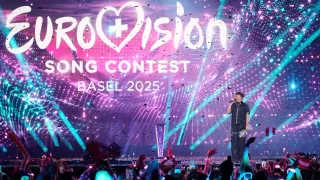September 26, 2014
Second to None: Chicago's Art and Culture Scene
Matthew Wexler READ TIME: 6 MIN.
Second acts are usually where things start to unravel. It happens onstage when characters go askew or that 11 o'clock number fails to deliver, in a restaurant when the entr�e is a dismal effort compared to its right-sized predecessor, or even in a big-budget film that tries to rest its laurels on sentimentality. (Hilary Swank is probably still baffled by her own performance in "The Next Karate Kid").
Such was my conundrum on a recent visit to Chicago, a city I called home in the mid-1990s. Those young adult years were packed with the typical trials and tribulations of someone trying to find his place in the world. Plenty of restaurant shifts followed by dancing at Berlin (which is still in operation) until 4 a.m. Carpooling out to Drury Lane Theatre in Oakbrook or the Marriott Theatre in Lincolnshire. And a community-driven sense of culture and artistry that seemed to translate to competition and rejection as soon as I moved to New York City. I've romanticized Chicago since I left more than 17 years ago and what my life could have been had I stayed.
I had good reason to leave. My dreams felt too big for what is now a city of 2.7 million people. I wanted to trade the 77 neighborhoods for one island called Manhattan - 227 square miles for a vertical city that would force me to experience cultural and socioeconomic diversity.
But the Chicago I revisited this summer easily lured me back. Never underestimate nice. Granted, when a journalist shows up people are usually on their best behavior, but I had a sneaking suspicion that the warm smiles and hearty handshakes were genuine. And after about the 20th conversation where yet another organization - unprovoked - was so thrilled to toot the horn of another, I started to believe that they had all drunk the Kool-Aid, and I wanted some, too.
The following museums, theater companies, cultural institutions and hospitality venues only scratch the surface of what Chicago has to offer. When planning your visit, mix and match based on your interest, or hop on the "L" and discover a neighborhood block by block.
Beyond the Bean
Known for its public art, Chicago's untitled Picasso sculpture has been one of the city's most iconic visual landmarks since its installation in Daley Park in 1967. While the 50-foot-tall structure certainly commands a presence, it is Cloud Gate (otherwise known as "the Bean") in Millennium Park that now draws international visitors and anyone with a camera or smartphone.
Liquid mercury inspired British artist Anish Kapoor to create the 110-ton elliptical sculpture, which measures 66 feet long and 33 feet high. The concave chamber below reflects a dizzying array of surfaces and offers a portal to the park, which celebrates its 10th anniversary this year. Beyond the Bean lies Jay Pritzker Pavilion, a Frank Gehry-designed performance venue that integrates a trellis of intersecting steel pipes, which span not only the pavilion but also the Great Lawn, cumulatively seating 11,000 people.
Those looking for respite amid the nearly 25-acre park can wander through Lurie Garden, a perennial urban oasis that includes a 15-foot-high shoulder hedge, an organic reference to Carl Sandburg's description of Chicago as the "City of Big Shoulders." The park's 10-year history is currently on display through October in a curated photography collection titled Millennium Park: An Anatomy in Photographs.
A Trip to the Library
Home to the largest Tiffany stained-glass dome in the world, the Chicago Cultural Center opened in 1897 as the first permanent home of the Chicago Public Library and headquarters for the Grand Army of the Republic (the Union Army veterans' organization).
A stunning architectural example and free to the public, the center features rare imported marble, often used in a book-matching technique whereby slabs are sliced, polished and installed to create a mirrored pattern. Mosaics of Favrile glass, mother-of-pearl and colored stone can also be seen throughout the meticulously maintained structure. Current exhibits include CHGO DSGN, a curated exhibit of more than 100 of the city's most influential designers (through November 2).
The Creative Class
Anchored by the Art Institute of Chicago and the Museum of Contemporary Art, Chicago (MCA), the city also has dozens of art galleries, including free River North tours offered every Saturday by Chicago Gallery News. This fall also welcomes the return of Expo Chicago (September 18-21). Whether you're looking to admire world-famous paintings or sculpture or procure a one-of-a-kind conversation piece for your own home, there are plenty of offerings.
Originally organized as the Chicago Academy of Design in 1856, the Art Institute has undergone numerous transformations over the past 158 years and has been in its current home since it was built for the 1893 World's Fair. The 300,000 works of art include George Seurat's A Sunday Afternoon on the Isle of La Grande Jatte, Edward Hopper's Nighthawks and Grant Wood's American Gothic.
Designed by Renzo Piano, the museum opened its modern wing in 2009, making it the second-largest art museum in the country. Visitors are flocking to the Ren� Magritte exhibition (through October 13), which focuses on the surrealist painter's works from 1926 to 1938. But for those with a more macabre aesthetic, a haunting collection of photographs by Sarah Charlesworth depicts news photographs of people jumping or falling off buildings. It is the first in a series titled Photography Is_________ that runs through May 2015.
Bowie Arrives
Although MCA's history may date back to only 1967, its accomplishments in acquiring and curating substantial collections are no less impressive. The museum has been in its current home since 1996 and is on the precipice of one of its most daring exhibitions, David Bowie Is (September 23-January 4, 2015).
The exhibition will focus on the performer's creative process and collaborate efforts. "Bowie's peerless understanding of the importance of image cultivation and reinvention make him a comfortable fit with others in the MCA collection and exhibition history, such as Cindy Sherman and Andy Warhol," says Chief Curator Michael Darling. "Similar to many artists working today, he has never limited himself to one area of cultural production."
While Bowie may be getting all the buzz, Unbound: Contemporary Art After Frida Kahlo is a moving exhibit that is of particular relevance to the LGBT community. Kahlo's first U.S. solo show was at MCA in 1978. This exhibit uses two of those paintings as a springboard to explore contemporary art. Relatively unknown during her lifetime, these works act as a catalyst to examine other artists' exploration of similar themes, including the performance of gender, sexuality, feminism, multiculturalism and social class.






